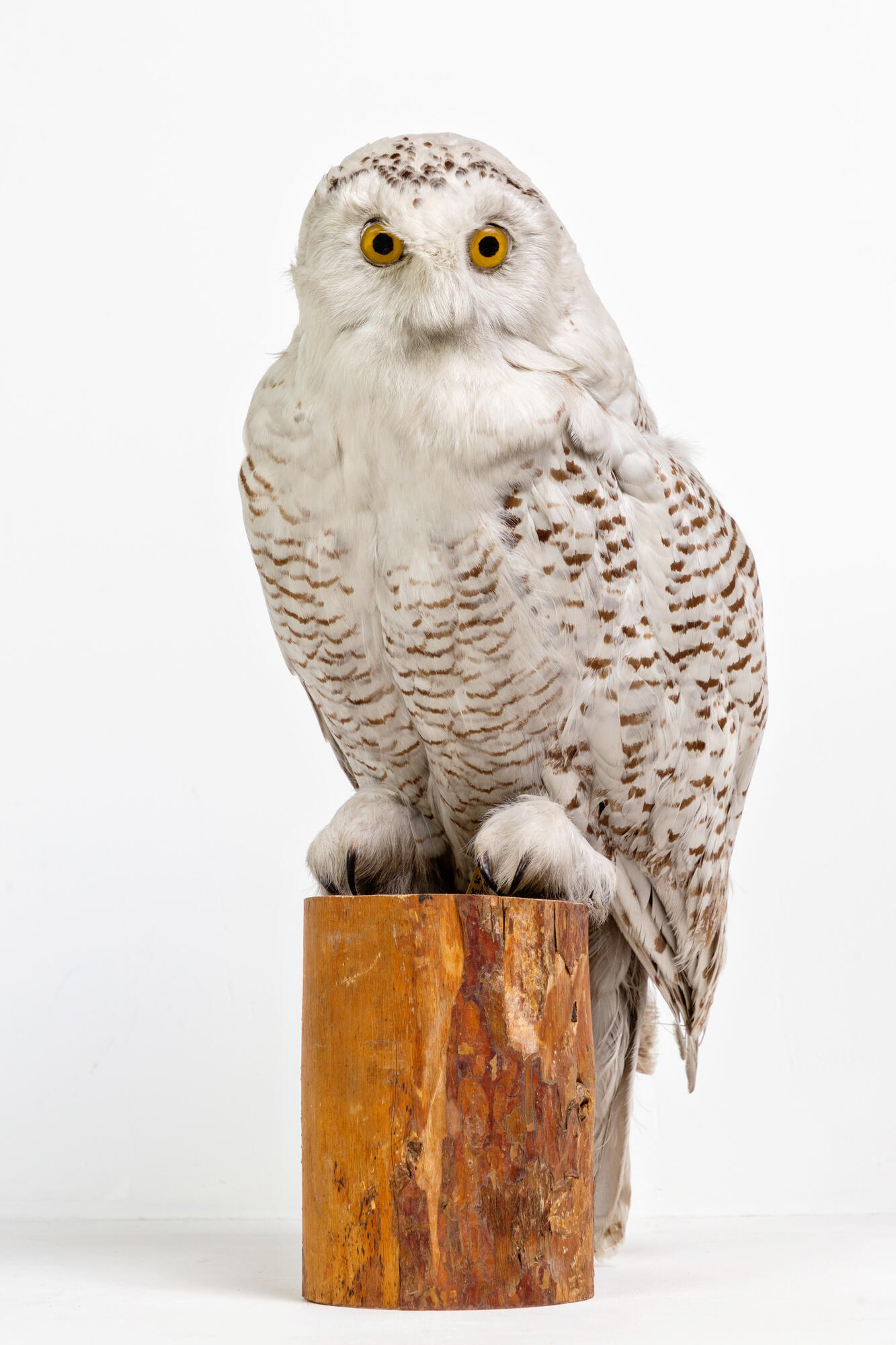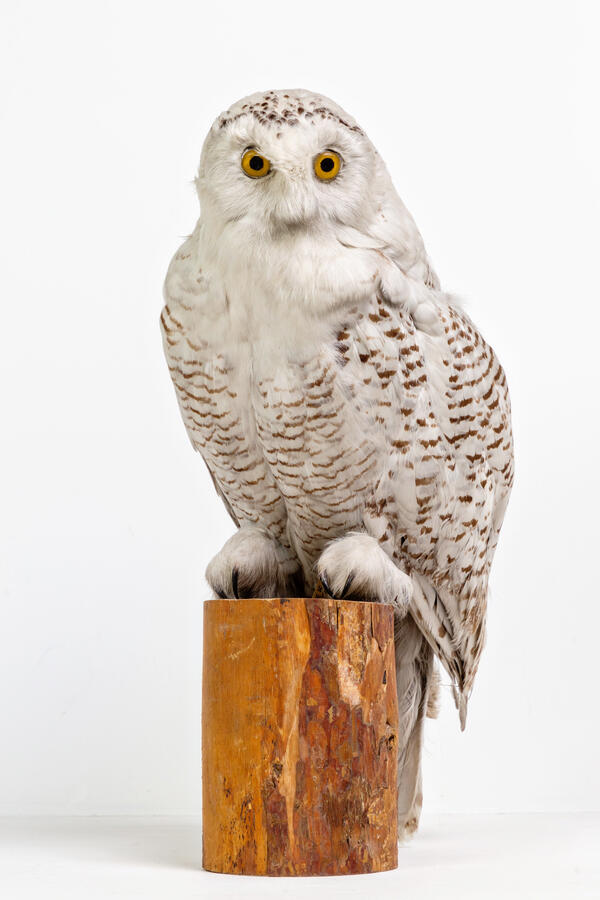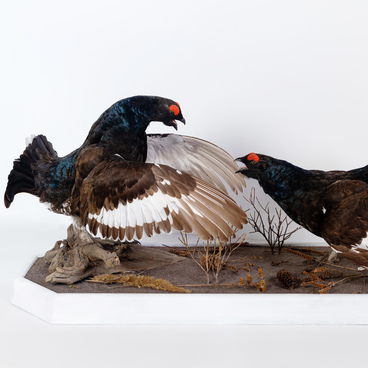The white owl is a rare wintering bird. The size of it almost from the eagle owl. The body length is 65 cm, wingspan 160 cm, and weight is up to 3 kg, with females larger than males.
This bird is distributed throughout the tundra zone, so it is also called the polar owl. In winter, in search of food, it can migrate to the zone of forest tundra and steppes, but it is rare in the forests. On wintering grounds, it tries to stay in open areas, and sometimes flies into settlements.
Some individuals remain in nesting sites for the winter. Due to its thick white plumage, the owl can live in frozen areas of the tundra and hunt at low night temperatures. The feather cover on its paws resembles wool. It does not allow the bird to freeze and complements its camouflage suit. Thanks to this plumage, the owl spends less energy on maintaining body temperature, so it needs less food. That is why owls are not afraid of starvation and they are content with a fairly modest food.
The owl can hunt at any time of the day, but prefers twilight. The basis of its diet is made up of mouse-like rodents. Thus, in a year it usually eats more than 1,600 of them. In addition to rodents, the owl catches hares, mouse hares, willow grouses, ducks, and does not neglect fish and carrion.
With excellent eyesight, the bird can easily navigate both during the day and in the darkness of the polar night. Usually, the owl settles on an elevation and looks around, and, thanks to the movable neck, it can turn its head 135 degrees in one direction.
The polar owl makes staccato, barking and cawing sounds, and when the bird is excited, one can hear its high trill. Polar owls play a key role in the tundra ecosystem. In addition to being natural rodent exterminators, owls become unwitting protectors of many other tundra birds. Ducks, geese, brants, and sandpipers willingly settle near them, since owls successfully drive away from their territory Arctic foxes ruining the nests of these birds.
This bird is distributed throughout the tundra zone, so it is also called the polar owl. In winter, in search of food, it can migrate to the zone of forest tundra and steppes, but it is rare in the forests. On wintering grounds, it tries to stay in open areas, and sometimes flies into settlements.
Some individuals remain in nesting sites for the winter. Due to its thick white plumage, the owl can live in frozen areas of the tundra and hunt at low night temperatures. The feather cover on its paws resembles wool. It does not allow the bird to freeze and complements its camouflage suit. Thanks to this plumage, the owl spends less energy on maintaining body temperature, so it needs less food. That is why owls are not afraid of starvation and they are content with a fairly modest food.
The owl can hunt at any time of the day, but prefers twilight. The basis of its diet is made up of mouse-like rodents. Thus, in a year it usually eats more than 1,600 of them. In addition to rodents, the owl catches hares, mouse hares, willow grouses, ducks, and does not neglect fish and carrion.
With excellent eyesight, the bird can easily navigate both during the day and in the darkness of the polar night. Usually, the owl settles on an elevation and looks around, and, thanks to the movable neck, it can turn its head 135 degrees in one direction.
The polar owl makes staccato, barking and cawing sounds, and when the bird is excited, one can hear its high trill. Polar owls play a key role in the tundra ecosystem. In addition to being natural rodent exterminators, owls become unwitting protectors of many other tundra birds. Ducks, geese, brants, and sandpipers willingly settle near them, since owls successfully drive away from their territory Arctic foxes ruining the nests of these birds.
The life span of the white owl in nature is up to 15 years, while in captivity certain individuals live up to 30 years.



